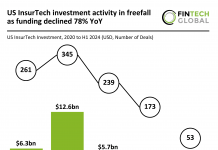Personalisation has continued to feature as an integral part of digitalisation strategies. Spurred on by the demand for it by consumers, companies across the financial services landscape are transforming their products to be personalised to specific customer needs.
The increasing level of importance consumers place on personalisation shows why it has become a key focus for firms. A report from Zendesk found that 72% of the 7,000 people it surveyed said personalisation is highly important to them. Similarly, 77% of banking leaders said personalisation has led to increased customer retention.
Driven by innovation, many firms are looking to move to the next stage of this – hyper personalisation. Through hyper personalisation, firms leverage AI, data, analytics, and automation to create tailored products or communications that are relevant to the customer’s current situation. For instance, a customer might have bought a number of expensive products and is sent information about a new insurance product. Alternatively, a chatbot could leverage the backlog of a customer’s data history to provide better support to a customer query. There are many different use cases for how hyper personalisation could transform the experiences a firm provides its customer.
The backbone behind these capabilities is data. This data is used to train the AI models to create a character profile on a customer. Alternative data streams are helping financial services firms build more and improve their capabilities. A couple of alternative data sources that would help firms increase their ability to build a unique character profile for a customer would be leveraging information from apps and even social media. However, firms should take careful consideration when exploring the use of new data sources.
Lindsay Schreiber, Head of Data at IntellectAI, said, “With the advent of hyper personalisation, if we are thinking about it in the sense that it’s a marketing approach that uses artificial intelligence (AI) with real-time data to create products, services, or content that are customer-specific and highly granular, then the data streams being used need to be considered very thoughtfully.”
There is a blurred line when assessing the ethical use of certain alternative data streams. Social media is a prime example of this. For instance, if a consumer is using a fitness tracker app and has given permission for a firm to leverage this data, this can help the customer get more tailored products, such as more accurate insurance policies, and helps the client provide better quality products to their customers. However, if a user shares certain exercise data, like their regular running activities, on social media, they are not always going to feel comfortable with a firm monitoring that information.
Schreiber explained, “The use of social media data for the benefit of marketing efforts where users have not explicitly provided permission, is a very different conversation. Even if users have given up the right to the ownership of their data through a social media App, for example, having this data used to create a hyper personalised experience in another sphere of life, e.g. wealth, may be perceived as ‘creepy’ and take users into the ‘uncanny valley’ territory, which would potentially backfire on marketers.”
Information posted on social media, depending on privacy settings, is available for everyone to view and can give an accurate picture of a person’s life. Whether they should or not, people are happy to share information about their private lives with everyone. Whether they have just had a baby, bought a house, planning for a holiday, mourning a loved one or so much more. Strava, for instance, allows people to share their exercising habits. While there are privacy settings people can enable, there is the possibility for someone to share all this information with the public. However, if a company starts monitoring it to build profiles for personalisation, it can start to feel a little like Big Brother in “1984”.
The ethics of using social media for personalisation are tricky. Schreiber said, “This is a complex space, and issues such as transparency, data ownership, data privacy, and the impact of potential algorithmic bias are a few areas that should be taken into consideration.”
Despite this, letting a financial services company use this information can provide the customer with much more accurate and time-relevant products. Ultimately, while there will be many customers that will refuse this access, there could be a significant group of people that are willing to make that trade off, Schreiber noted. The best way to address this is by making personalisation a completely transparent conversation with full consent from each individual customer. “The consent and transparency should be individually personalised,” she added.
This transparent and consent-based approach towards data is something Schreiber believes should become the norm in the modern world. As regulators increase data protection regulations and try to give people more power over their data, people could start to see a more equitable environment for how companies service them.
She concluded, “The power balance in terms of personal data ownership, particularly in the social media space, has long been skewed in the direction of large organisations, where the incentives are set up so that we are as customers trapped in a connectivity conundrum.”
“It’s time for us as customers and users of this technology to address the imbalance and begin the conversation to take back ownership of our data, however this will mean fundamentally dismantling and re-inventing the current industry incentives and completely re-structuring the business models of the incumbents to move towards paying for a service or App with money, rather than paying with our data. No small challenge!”
Keep up with all the latest FinTech news here.
Copyright © 2024 FinTech Global











